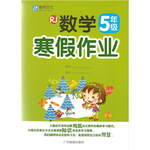题目内容
阅读理解。
John liked to wear his hair very long. Some of his friends thought it looked like a girl's hair, but they
never made jokes about it, because John was a big strong man and he didn't think jokes about his hair
funny.
John always went to the barber's (理发店) twice a month to have his hair cut and washed, and one
day the barber said to him. "Now why don't you let me cut most of this hair off and make your head tidy? Nobody will recognize (认出) you if I do that. I'm sure."
John said nothing for a few seconds and then he said,"perhaps you are right, but I am sure that
nobody will recognize you, either, if you do that to my hair."
never made jokes about it, because John was a big strong man and he didn't think jokes about his hair
funny.
John always went to the barber's (理发店) twice a month to have his hair cut and washed, and one
day the barber said to him. "Now why don't you let me cut most of this hair off and make your head tidy? Nobody will recognize (认出) you if I do that. I'm sure."
John said nothing for a few seconds and then he said,"perhaps you are right, but I am sure that
nobody will recognize you, either, if you do that to my hair."
1. John kept lo ng hair because _______.
ng hair because _______.
 ng hair because _______.
ng hair because _______.A. the barber wouldn't like to cut it short
B. the hair grew fast
C. John liked it to be long
D. John was a girl
B. the hair grew fast
C. John liked it to be long
D. John was a girl
2. His friends never made jokes about the hair because _______.
A. the hair is funny
B. John was big and strong
C. John liked his hair very much
D. John didn't like jokes about his hair and they were afraid of him
B. John was big and strong
C. John liked his hair very much
D. John didn't like jokes about his hair and they were afraid of him
3. A barber is a _______.
A. man who looks after the babies
B. man who makes clothes for people
C. person who cu t men's hair
t men's hair
D. shop where one's hair can be washed and cut
B. man who makes clothes for people
C. person who cu
 t men's hair
t men's hairD. shop where one's hair can be washed and cut
4. The barber advised (建议) John _______.
A. to have his hair cut short
B. to cut off most of his hair
C. to be cut off his long hair
D. not to be recognized by his friends
B. to cut off most of his hair
C. to be cut off his long hair
D. not to be recognized by his friends
5.John's answer was _______.
A. a joke
B. right
C. a great praise (称赞)
D. threatening (威胁) to the barber
B. right
C. a great praise (称赞)
D. threatening (威胁) to the barber
1-5 CDCAD

练习册系列答案
 黎明文化寒假作业系列答案
黎明文化寒假作业系列答案 寒假天地重庆出版社系列答案
寒假天地重庆出版社系列答案
相关题目
| 阅读理解。 | ||||||||
| ||||||||
| 1. If you are interested in folk music, yon might choose the book _______. | ||||||||
| A. The Snowman B. Madame Bovary C. Electric Eden D. Between Shades of Gray | ||||||||
| 2. The Snowman most probably tells _______. | ||||||||
| A. a life story B. a disaster story C. a love story D. a detective story | ||||||||
| 3. We can infer (推荐) that all the books above are _______. | ||||||||
| A. available B. for adults C. expensive D. newly written |



